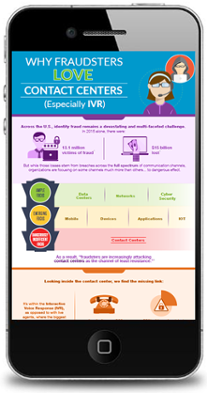
We hear about fraud occurring in government programs all the time, right? So why was this month’s SNAP (food stamp) bust in Florida – aptly named Operation Stampede/Cash Hungry – so noteworthy?
With SNAP we generally see trafficking as the major fraud channel, where beneficiaries sell their own benefits to small-time crooked retailers and buyers for about 50 cents on the dollar. Generally, this is so they can support their families in other ways with the money, but sometimes it’s for nefarious reasons. Even so, SNAP fraud is touted at about 1.3% of all SNAP costs (there's some debate on that number), which is very minor when you consider the billions $ going into the program. Commercial enterprises face the same or more.
Florida Operation: Eye-Opening
The May 2016 Florida SNAP bust was a big eye-opener. Significant fraud is occurring with SNAP, more so than the government realizes. This major operation began in 2014 and evolved to the 2016 take-down.

- One individual stole over 500 identities and converted them into SNAP benefits that he sold at one food market.
- That operation expanded to investigate all retailers at the market, and a total fraud of $30 million conservatively and 22 people who trafficked benefits illegally from legitimate program participants.
Government Action
The USDA FNS, the agency that oversees the SNAP program at the Federal level, has a zero tolerance policy on fraud. However, while State governments and the FNS are each still mapping out what legal roles they have in these type of actions, law enforcement in South Florida took the problem into their own hands.
Frankly, the more State Agencies and the FNS are armed with intelligence, the easier it is for them to implement additional fraud prevention before it gets to the Operation Stampede scale. They, like their commercial enterprise cousins, can’t do it alone and shouldn’t expect to. Staff resources and technology must work together successfully.
Fraud isn’t Glamorous
Stealing money has been glamorized for avid movie goers, with famous bank heists and fraud tricks on the big screen racking in millions (billions?) in box office $. IMDB has a best robbery list that goes back to 1933!
Well, here’s the reality:
“[by] 2005, it’s believed that an identity was stolen every 4 seconds…”
– Frank Abagnale, FBI fraud expert and subject of the movie Catch Me if You Can
Abagnale also confirms that fraud costs US citizens big bucks:
- $1Trillion paid over all agencies was fraudulent
- $994B in white collar crime 2015 (7% of revenue losses)
- $3B SNAP-fraud in 2013
- $4B IRS tax fraud 2012
- $7.7B Unemployment fraud 2013
- $100B Medicare fraud

Improving Fraud Efforts
For the SNAP program, FNS has a stringent integrity program already in place, but they and States are still facing gaps that technology can help fill. Can they, or any organization and enterprise, do it all?
Answer these questions:
- What are fraudsters doing in your various channels - phone, web, mail?
- Are you watching all these “gates” as best you can? How?
- In self-service environments where bad guys run free, what’s your plan?
- How are you using the analytics you collect to take action?
- Isn’t there more you can do?
“…there is no crime which has a 100% detection rate…”
Fraud is epic and rampant. Congratulate yourself for your big and small wins against it. And make sure you are considering all the options.
Download the infographic about fraud in the IVR >



